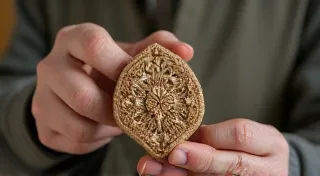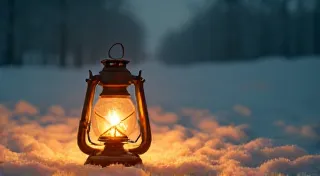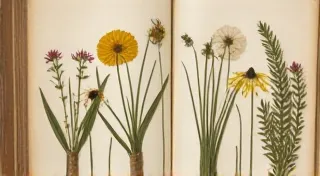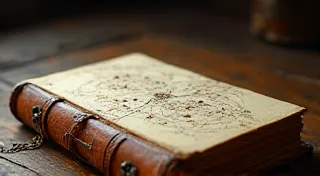Sculpting the Landscape: Mastering Terrain Techniques for Realism
There's a certain magic in watching a miniature railway glide across a meticulously crafted landscape. More than just a collection of trains and track, a truly captivating miniature railway is a miniature world—a testament to patience, artistry, and an appreciation for the beauty of the natural world. It’s a feeling akin to discovering a forgotten antique accordion tucked away in a dusty attic. The instrument itself, a marvel of engineering and craft, evokes a past era of music and travel, each bellows and key telling a silent story. Just as an accordion's resonance speaks of its maker's dedication, the realism of a miniature railway's scenery speaks of the layout builder’s own commitment to detail. The flat, lifeless beginnings are the unpolished wood; it is the sculpting that breathes life into the landscape.
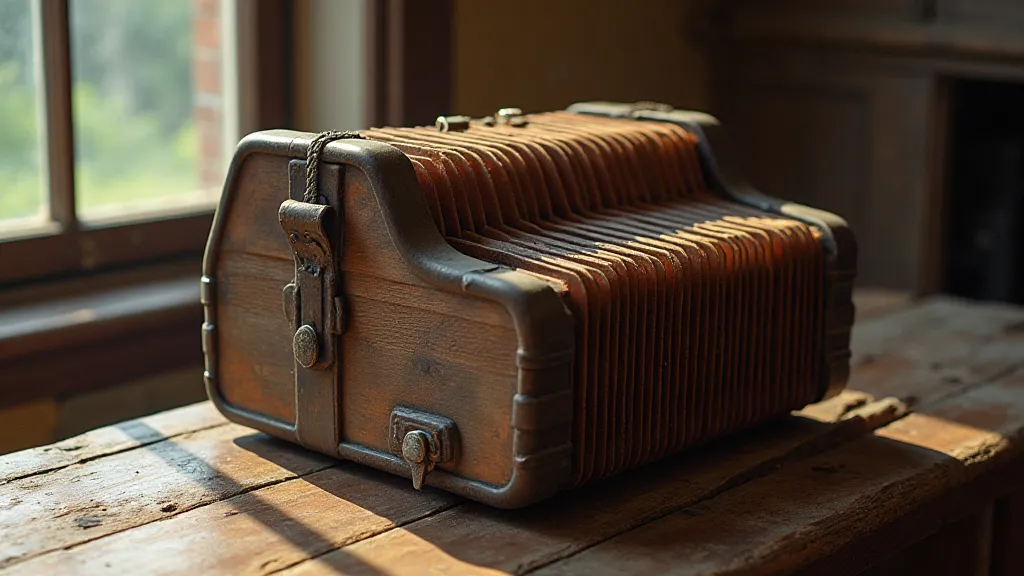
The Foundation: Earthworks and Ground Cover
The first step in creating realistic terrain isn’t about mountains and rivers – it’s about establishing the ground cover. Many new layout builders make the mistake of placing track directly onto plywood. That's like attempting to build a cathedral on unstable ground. A proper base is crucial. Foam, cork, or a combination of both are commonly used. Foam provides the bulk and height needed for significant earthworks, while cork provides a smoother surface for finer details and track laying. Don’t be afraid to experiment with layering. Different thicknesses of foam can create subtle variations in elevation that add a sense of naturalism.
Think about the real world. Land isn’t uniformly flat. It rolls, dips, and rises. Use a hot wire cutter or knife to shape the foam into gentle slopes and contours. Remember, subtlety is key. Avoid sharp angles and dramatic drops unless they are specifically called for by your prototype location. Once the basic shape is established, a layer of plaster cloth or paper mache provides a hard shell for subsequent detailing.
Creating Elevations: Mountains, Hills, and Valleys
The creation of mountains and hills requires a slightly different approach. For smaller features, layering sculpted foam is often sufficient. For larger, more imposing mountains, consider using a “massing” technique. This involves building up layers of foam, gradually increasing the height and width of the mountain. A good tip is to use photos of the actual landscape you are replicating as a guide. Pay attention to the angles of the slopes, the texture of the rock, and the shadows that define the form. Achieving a truly convincing mountain range often requires a dedicated commitment to detail—a commitment not unlike the precision required to craft detailed scenery that truly replicates a natural environment. For more intricate design elements, exploring techniques for designing for the fleeting beauty of N scale can provide valuable inspiration.
Once the basic shape is built, the real artistry begins. Texturing the mountains is essential. A combination of techniques can be employed. Use sculpting tools to create fissures, cracks, and ridges. Apply a mixture of plaster and sand to mimic the appearance of loose scree. Don’t be afraid to use a darker shade of paint to highlight the shadows and create a sense of depth. Remember that mountains are not perfectly smooth; they are rough, jagged, and weathered by the elements.
The Flow of Water: Rivers, Streams, and Ponds
Water features are the heart of many miniature railways. A flowing river can transform a simple layout into a dynamic and captivating scene. Creating realistic water takes practice, but the results are well worth the effort. Start by sculpting the riverbed using foam or plaster. A gentle, curving path is more natural than a straight line. The bed of a river is not perfectly smooth; it’s filled with rocks, pebbles, and sand.
There are several techniques for creating the water surface itself. Epoxy resin is a popular choice, as it creates a clear and realistic finish. However, it can be tricky to apply and requires careful preparation. A simpler alternative is to use a combination of paints and gloss gel. Layer the colors gradually, starting with a dark blue or brown for the riverbed and gradually lightening to a light blue or turquoise for the surface. Adding a touch of white paint will create a shimmering effect.
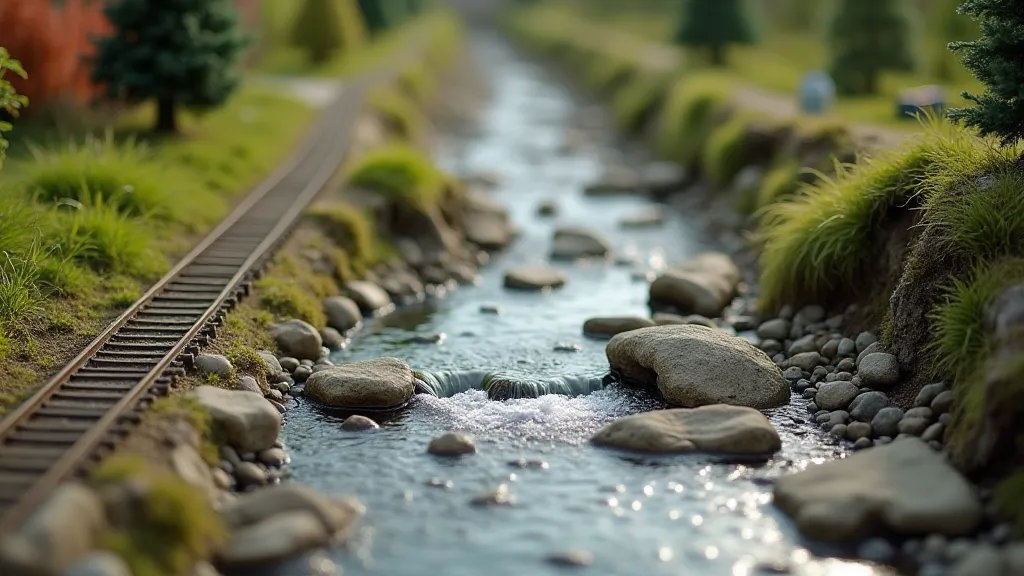
Vegetation and Detail: Bringing the Landscape to Life
No landscape is complete without vegetation. The type of vegetation you use will depend on the climate and location of your prototype. Trees, shrubs, and grasses add texture, color, and a sense of scale to the layout. Don’t be afraid to experiment with different techniques. Static grass applicators can quickly cover large areas with realistic grass. Hand-placing individual trees and shrubs adds a more detailed and natural look. Remember to vary the height and density of the vegetation to create a more realistic appearance. The process of realistically simulating the variety and complexity of plant life can be demanding, and for those looking to enhance their diorama with botanical accuracy, a field guide to miniature flora offers a wealth of knowledge and inspiration.
The smallest details can also make a big difference. Adding rocks, fences, and buildings adds a sense of history and human presence to the landscape. These details are like the fine tuning of an antique accordion; they refine the overall impression and speak to the creator's dedication. I remember finding an old, broken fence post in a field once and using it as the prototype for a miniature fence. It’s those unexpected finds that can add a touch of authenticity to your layout.
Weathering and Aging: Simulating Time's Touch
Finally, weathering and aging are essential for creating a truly realistic landscape. Time takes its toll on everything. Rocks are stained by minerals, buildings are covered in grime, and vegetation is bleached by the sun. Use washes of paint, dry brushing, and weathering powders to simulate these effects. A subtle application of earth tones can make a dramatic difference. The process of weathering is similar to restoring an antique accordion—carefully removing layers of grime and revealing the underlying beauty. It requires patience, attention to detail, and a deep appreciation for the passage of time. Achieving a convincingly weathered look often requires understanding the specific environmental factors impacting a landscape. For those interested in recreating industrial scenes, considering elements of designing a convincing industrial layout can provide insight into recreating years of wear and tear.
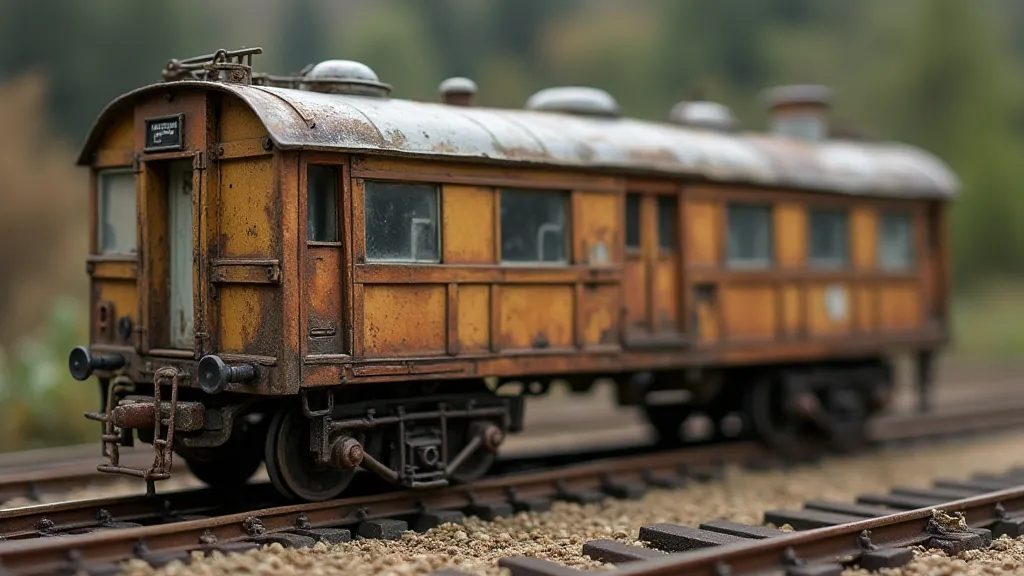
Creating a realistic miniature railway landscape is a challenging but rewarding endeavor. It requires patience, creativity, and a deep appreciation for the beauty of the natural world. Beyond the straightforward application of paints and powders, more advanced techniques like casting and resin detailing can further enhance realism. For hobbyists looking to push the boundaries of their craft, exploring the art of resin casting for custom railroading components can unlock new possibilities.
But the final result—a miniature world that transports you to another time and place—is well worth the effort. Just as the resonant chords of an antique accordion transport the listener to a bygone era, a meticulously crafted miniature railway landscape can transport the viewer to a world of wonder and imagination.
